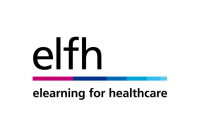Anaesthesia | Patient specific populations | Management of burns, smoke inhalation and chemical burns



Management of Burns, Smoke Inhalation and Chemical Burns
Session Overview
Description
This session focuses on the key management priorities and principles that a healthcare professional should be aware of when treating a patient presenting with major burns.
Learning Objectives
By the end of this session you will be able to:
- Describe the key treatment priorities in the initial management of the burns patient
- Explain how to calculate fluid requirement in the burns patient and how to assess whether fluid resus is adequate
- List the treatment steps in the management of the burn wound
- Explain the procedure of escharotomy and its indications
- Identify those patients presenting with airway burns and describe how to manage inhalational injury and systemic gases toxicity
- Describe the initial assessment and management of the patient presenting with a chemical burn and electrical burn
Prerequisites
Before commencing this session you should have completed session:
- Initial Assessment of the Burns Patient (001-7112)
Burns are a common type of traumatic injury and can either be isolated or form part of a complex major trauma. It causes considerable mortality and morbidity and encompasses a significant financial burden with intensive care stays, long hospitalizations, rehabilitation and ongoing wound and scar treatment.
A major burn is classified as any burn covering >20% body surface area (BSA). It can also be defined by a burn that is complicated by major trauma or inhalational injury, a chemical burn, or a high voltage electrical burn.
No matter the size and the type of burn present the treatment priorities remain the same. The goal in management is to limit the extent of the systemic insult. The management is complex and requires multidisciplinary team involvement from a specialized burns centre, focusing on improved resuscitation, enhanced wound management, infection control, management of inhalational injury and prevention of organ dysfunction and multi-organ failure.
- Anaesthesia | Obstetrics | Regional Analgesia 2: T...
- Posted By eIntegrity Healthcare e-Learning
- Posted Date: 2024-12-28
- Location:Online
- This session explains how to prepare for a regional analgesia for labour, how to insert an epidural catheter and how to establish and maintain labour analgesia.
- NiPHC Transition to Practice Program
- Posted By APNA - Australian Primary Healthcare Nursing Association - Transition to Practice Program
- Posted Date: 2024-12-28
- Location:Online
- Transition to Practice Program: helping nurses make the move into primary health care.
- Anaesthesia | Obstetrics | Body Composition and Gr...
- Posted By eIntegrity Healthcare e-Learning
- Posted Date: 2024-12-28
- Location:Online
- The session starts with an introduction to the concept of growth and development, and why this is important for paediatric anaesthesia pharmacology. This includes an important outline of what is ‘normal’. A key point of this session is for th
- Anaesthesia | Obstetrics | Anaesthesia in Early Pr...
- Posted By eIntegrity Healthcare e-Learning
- Posted Date: 2024-12-28
- Location:Online
- This session will describe the common risks to both mother and fetus that require surgery in early pregnancy. It will support the recognition of the potential pitfalls of anaesthetizing women in early pregnancy to ensure the safety of both the mother and
- Anaesthesia | Obstetrics | Breastfeeding and Anaes...
- Posted By eIntegrity Healthcare e-Learning
- Posted Date: 2024-12-28
- Location:Online
- This sessionprovides information for an anaesthetist to give to mothers about the benefits of breastfeeding, and the safety of drugs commonly prescribed in the perioperative period.


